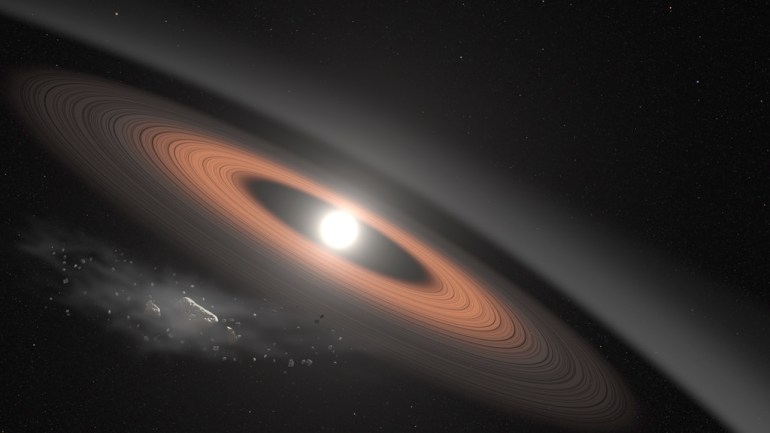You may not think much about carbon but you wouldn't be alive without it; It is the main ingredient in organic compounds found in all living things on Earth. But where exactly does carbon come from? This was the subject of some discussion among scholars.
New research has found that the primary source of carbon in the Milky Way is the white dwarf stars, the dead cores of stars that were very similar to our sun, and the research was published in the journal Nature Astronomy on July 5.
Carbon formation process
It is well understood that heavier elements of hydrogen and helium are formed by stars throughout the universe, and fusion of elements in the nuclei of stars can lead to the construction of heavy elements such as iron through a process called stellar nuclei, and even heavier elements are created through processes such as the capture of neutrons in supernova Mega.
Carbon is formed through a process known as the triple alpha process, in which 3 helium nuclei are combined to form carbon, a process that occurs at the end of a star's life.
But it is not clear to astronomers whether the abundance of carbon in our galaxy is largely caused by stars the size of the sun when they quietly collapse into white dwarfs, or if they come if more massive stars explode when they turn into supernovae.
Spectra analysis of stars
A team of astronomers led by Paolo Marigo from the University of Padova in Italy searched for answers in open star clusters, groups of thousands of stars of almost the same age, formed in the same molecular cloud.
The team identified the white dwarves in 5 molecular clouds, using observations obtained by the WM Keck Observatory in Hawaii in 2018.
These observations provided the spectra of stars, which are: "fingerprints" of light that can be decoded to reveal information about the star, such as temperature (and thus age), chemical composition, and surface gravity (and hence mass).
This is illustrated by Enrico Ramirez-Ruiz from the University of California Santa Cruz in a report on the study on the university's website, reported by Science Alert.
"From analyzing the observed Keck spectra, it was possible to measure the masses of white dwarves," says Ruiz.
Dwarves and their ancestors
It is known that the mass of the dead star is related to the mass of its predecessor, the more massive the white dwarf, the greater the progenitor star that produced it.
These masses are not quite the same, given that the progenitor star ejects a lot of material into space, and this relationship between the two white dwarf blocks is known as the relationship of the final primary mass.
In white dwarfs, the mass relationship can be calculated if you have a white dwarf spectrum. They - like dead stars - no longer merge into them, and so they cool, and any heat that the white dwarf holds is left over from its predecessor, and will slowly radiate into space over billions of years.
If we know its mass, temperature, and chemical composition, we can calculate the rate of this cooling, which in turn allows astronomers to calculate the life of the white dwarf.
Since we know the age of groups of open clusters, we can subtract time from the primary collapse of the group's age to see the age of the star when it died, and this information can be used to calculate the initial mass of the progenitor star.
The relationship of the primary star to the final
But when the team applied this to some white dwarfs, especially those with ancestral mass 1.5 times that of the sun, they noticed something really strange.
The masses of white dwarves were larger than expected from the calculation of the masses of their predecessors, which the team calls the complexity of the initial relationship to the final.
"Our study interprets this imbalance in the relationship of the initial mass to the final as the signature resulting from the carbon synthesis made by the low-mass stars in the Milky Way," says Mario.
The team believes that this occurs in the ancestor of the white dwarf at the end of its life, where helium merges into the carbon in the depths of its heart, then this carbon is transported to the surface, where it is blown into space in the relatively gentle stellar wind.
Because the process occurs very slowly, the star has time to gain mass in the heart. It is this most massive heart that collapses in a white dwarf that is heavier than expected.
Generally, this occurs in stars that have more mass than twice the sun, but it does not appear in stars with a mass of less than 1.5 solar masses, which sets a good minimum for the mass of volatile carbon stars.

